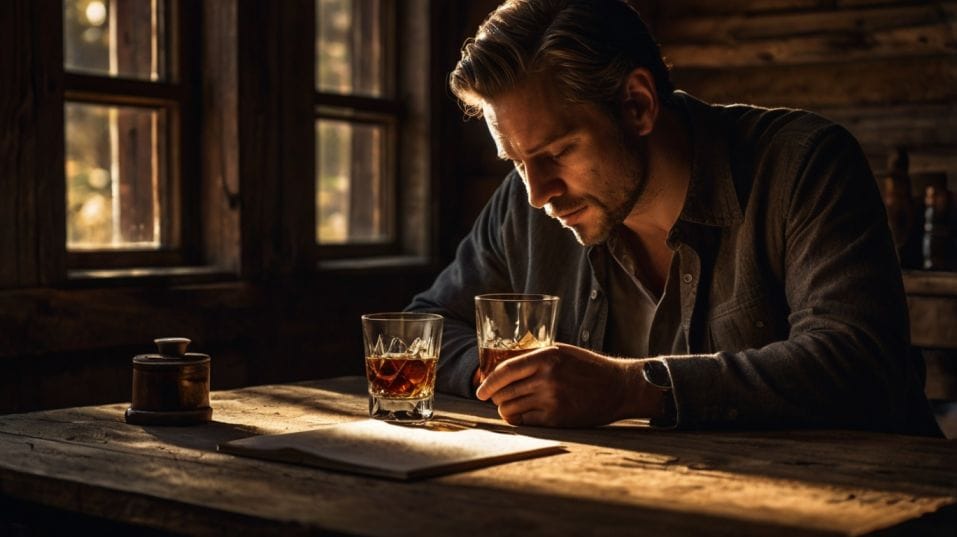Top Whiskey Gadgets That Actually Work
Explore whiskey like a pro. These smart, proven gadgets sharpen your senses and help you taste, learn, and collect with real confidence.

Ever wondered why your whiskey doesn’t taste like the reviews say it should? It might not be the bottle—it might be your tools. The right gear reveals more in every sip: subtle aromas, hidden textures, evolving flavors.
Whether you're just getting into whiskey or starting to explore beyond the basics, a few smart gadgets can deepen your appreciation fast. No gimmicks. No fluff. Just tools that train your palate to drink with intention.
The Right Glass Is Non-Negotiable
The glass you drink from shapes how you taste—literally. A proper whiskey glass doesn’t just hold liquid, it channels aroma, concentrates flavor, and controls the pace of a pour.
The Glencairn glass is the go-to for a reason: its bulbous base and tapered rim were designed to enhance nosing. Every swirl sends up esters and volatile compounds, letting you analyze the whiskey before you ever taste it.
If you're exploring lighter styles—grain whiskeys, young malts, or single grains—a tulip or copita glass can offer a more delicate, focused aromatic experience. These stemmed glasses also keep your hand from warming the spirit.
For peated or high-proof expressions, try a slightly wider bowl to give those denser compounds a little room to breathe.
Tumbler-style rocks glasses have their place—but it's not for serious tasting. They disperse aroma too widely, muting the very thing you're trying to appreciate. Use them when you're drinking for comfort, not analysis.

Forget Whiskey Stones—Control the Dilution Instead
Whiskey stones sell the illusion of sophistication. Freeze them, drop them in, and chill your pour “without dilution.” The problem?
That chilling also flattens the aroma. Cold dampens volatility, which kills complexity on the nose. And that’s where most flavor lives.
If you want control, use a fine water dropper or a glass pipette. Add a few drops of room-temperature water to high-proof or cask-strength whiskey. Watch what happens. Esters bloom, tannins settle, and the entire aromatic profile shifts.
The nose opens, revealing layers that were masked at full strength. This isn’t “watering it down”—this is how professionals taste whiskey. You're tuning it, not diluting it.
Keep track of how much you add. For some pours, half a teaspoon can make a dramatic difference. For others, one drop too many kills it. That’s the skill you're developing: knowing how to listen to the whiskey as it changes.
A Tasting Journal Is Your Most Underrated Tool
Palate development is a skill, not a talent. And like any skill, it improves with reps. A tasting journal turns each pour into a lesson. You don’t need fancy formatting—just commit to writing something down each time you taste.
Record the basics: bottle, distillery, age, proof, where and when you tasted it. Then dig into the sensory: nose, palate, finish, texture, mood. Did you like it?
Would you seek it again? Over time, patterns emerge. You’ll spot what you gravitate toward—highland sherry bombs, bold ryes, maritime peat. You’ll also train your brain to recall flavor, not just label design.
This matters for collecting, too. When you’ve got a dozen bottles and you’re trying to decide what’s missing—or what you’re drinking too much of—your own notes are far more reliable than reviews or ratings.
Mini Aging Barrels (Used Properly) Teach You More Than You’d Expect
Most whiskey fans scoff at mini barrels—and fair enough. They won’t turn cheap whiskey into a unicorn. But used the right way, they’re powerful learning tools.
Start with a clean, charred mini cask—1 to 5 liters. Pour in an over-the-counter, unremarkable bourbon or rye. Taste a sample each week.
You’ll get firsthand experience of how oak impacts flavor over time: vanilla from the wood sugars, spice from charred lignin, structure from tannins. It accelerates the aging curve in a way that makes changes obvious.
After a few cycles, reverse the process. Age a cocktail—say, a Negroni or Manhattan—for a few weeks in a seasoned barrel. Suddenly you’re not just drinking whiskey, you’re learning how it behaves. That’s experience you can taste.
Know Your Proof with a Digital Hydrometer or Refractometer
If you’re into cask-strength, private barrel picks, or indie bottlings, proof matters. More than you think. Some bottles say 62.5% ABV and drink like 48%.
Others say 54% and burn like fire. There’s more at play than just numbers—filtration, residual sugars, congeners—but having an accurate, portable way to test ABV gives you a clearer baseline.
Digital hydrometers and refractometers aren’t essential for beginners, but if you're evaluating multiple pours in a night or collecting rare bottles, they become seriously useful.
Especially with open bottles that may have oxidized or evaporated a bit. Knowing exactly what you're tasting helps build a more accurate sensory map.
Storage Tools That Preserve Your Whiskey, Not Just Display It
Open bottles don’t last forever. Oxygen is the quiet killer of flavor. If you’re serious about tasting, not just collecting, invest in tools that protect the whiskey between sessions.
Vacuum-seal wine stoppers work for short-term protection, but whiskey doesn’t oxidize as fast as wine. For long-term storage, use inert gas sprays that blanket the liquid with argon.
Or go simpler: decant the last third of a bottle into a smaller glass container to reduce air contact. Silicone corks with tight seals can also help maintain freshness.
And don’t store your whiskey above the stove or near sunlight. Heat and UV light destroy delicate compounds. A cool, dark shelf or closed cabinet does more to preserve whiskey’s flavor than any fancy humidor-style display ever will.
Aroma Kits Are the Fast Track to a Sharper Nose
Tasting whiskey without knowing how to describe it is like hearing music without recognizing notes. You feel something, but you can’t articulate it.
Aroma kits bridge that gap. They isolate specific scent markers—clove, dried fig, charred oak, banana esters, leather—and train your brain to recognize them.
Smell each vial or container repeatedly. Memorize the scent. Then revisit your whiskey and see what pops out.
You’ll start identifying subtleties that used to pass unnoticed. This isn’t about showing off. It’s about deepening your ability to engage with what you’re drinking.
It also speeds up your palate development dramatically. You won’t just know that you like a whiskey—you’ll know why.
That knowledge gives you power: to seek out better bottles, avoid overpriced ones, and help others navigate the whiskey world with confidence.
Final Thoughts
Whiskey should always be about pleasure—but that doesn’t mean it can’t also be a craft. The gadgets that matter aren’t flashy or complicated. They’re simple tools that help you listen to what the whiskey is telling you.
A better glass lets you taste more clearly. A dropper helps you unlock complexity. A journal teaches your memory. Storage gear keeps the flavor honest.
Aroma kits sharpen your vocabulary. And those mini barrels? They show you what aging actually does—up close and in real time.
Pick one and start today. Write down notes on your next pour. Try adding water and observe how it shifts. Taste something new and try to name three scents.
You don’t need a massive collection or a private bunker full of dusty bottles to be serious about whiskey. You just need attention, curiosity, and the right tools in hand. The rest? You’ll build it, sip by sip.




